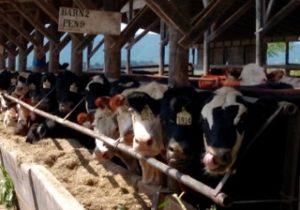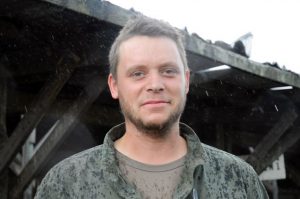Broadcast on The Food Chain, BBC World Service
Follow-up business feature on BBC News website
Meet the cows going natural
What is “natural” food, and is it better for us? For their half-hour radio documentary exploring the language of food labeling, The Food Chain commissioned me to bring in an American perspective.

Hormone-free feeder cattle from Cream Hill Stock Farm in Shoreham, Vt., are sold mostly to local packers who market the meat as “natural.” (© photo by Hilary Niles)
In this sound-rich segment, voices from a Vermont cattle farm, a livestock specialist and a grocery store shopper tell a story of the farm finances, food policy and consumer assumptions driving demand for nebulously defined “natural” food.
// Listen to the full episode here.
US farmers go ‘natural’ for profits
Thirty-five years ago, a professor moved to a historic farm on 600 acres of rolling hills overlooking the sparkling Lake Champlain in Vermont.
His family built the largest beef cattle feedlot (a place where cattle are fattened for slaughter) in the northeast United States — a crowning achievement in its time.

Wallace Greenwalt switched to “natural” farming when he took over operations at Cream Hill Stock Farm in Shoreham, Vt.
Months before he died at the age of 59, Paul Saenger passed that farm on to the son of one of his former college students.
Today, 29-year-old Wallace Greenwalt is also finding success on Cream Hill by running the farm his own way, in line with changing consumer demand.
Where Paul Saenger had raised about 1,000 head of cattle and used artificial growth hormones to do it, now Wallace raises just 600 cattle, free of hormones and antibiotics.